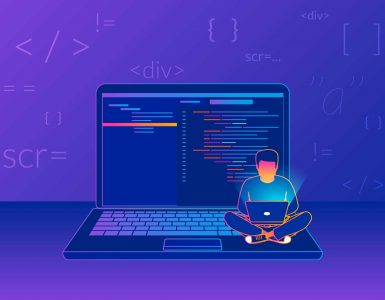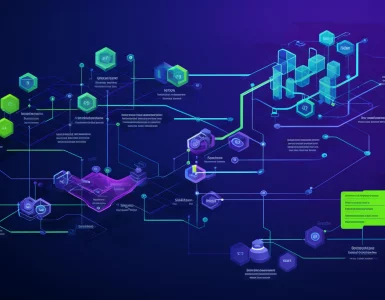Backend Developer Interviews – An Overview
Received an invite for your first backend developer interview? You have just landed at the correct destination!
Technical interviews can be an overwhelming yet exciting experience in your life, especially if it is your first time. Like many other candidates, you might look for the best tricks and tips to pass the technical interview with flying colors. Thankfully it’s not a diabolical task. With the right tips, preparation, and a positive mindset, you can pass your back and technical interview with flying colors.
This blog will talk about various processes during the technical interview. We will also share tips and hacks to help you succeed in your first interview. Without any delay, let’s get started!
What is the current job market scenario for backend developer roles?
Currently, software development roles are enjoying the limelight. There’s an incredible demand for talented developers across various domains within the IT industry. And this job role is expected to maintain an upward curve in the next couple of decades (if not more)!
So if you consistently keep your knowledge updated and have the correct skill sets, you will always be in demand.
The US Bureau of Labor Statistics (BLS) highlighted that the demand for backend developers is expected to grow by 22% by 2029. In simple words, the average projected growth rate of various backend developer roles is approximately 4%.
Additionally, skilled and talented backend developers will always have the opportunity to earn a higher-than-average salary and explore various options throughout their careers.
What rounds can you usually expect during a backend developer interview?
The number of interview rounds during backend developer selection depends on company regulations and the position (seniority level) you are applying for.
However, the typical backend developer selection process will include the following rounds:
- Online and machine coding
- Analytical and critical skill testing through problem-solving (involves algorithms & data structures)
- Design concepts – High-level and low-level design
- Hiring Manager, HR Interview, and Culture Fit (some companies may include salary negotiations in this round while some enterprises might have a separate HR and negotiation discussion)
As mentioned previously, the evaluation process and the number of rounds will depend on your role’s job responsibility and seniority level. For instance, if you are a fresher and applying for a junior role, The interview will mostly focus on coding, generic cultural fit, and problem-solving. However, for a senior role, design concepts and leadership skills are also important factors for consideration.
Let’s take a deep dive into each of these selection rounds!
Coding Expertise
Online Coding
Online coding serves as a primary screening test for understanding your coding skills. The results of this round will determine whether the company will move ahead with your candidature.
In most cases, the coding round involves a time test on an online coding platform. You are expected to develop code for a certain number of questions. The screening round usually takes 30 to 45 minutes to complete.
Machine Coding
The role of a backend developer involves presenting solutions to real-world problems. Therefore, many companies want to test your coding skill for practical problems. In this round, you can expect to get specific requirements. You must design the code to provide practical, real-world solutions within 1.5 to 2 hours.
The code you developed will be accessed based on the following factors:
- The number of working solutions (requirements) completed
- Code Modularity
- OOP and SOLID principles
- Design Patterns
- Refactorability
- Separation of Concerns
- Concurrency Handling, etc.
The working solution should be given top priority. Next, focus on following the OOP & SOLID principles. Not completing the requirements might get you rejected. It is recommended that you spend 5-10 mins planning and strategizing. Consider the entities, classes, inheritance, and compositions that you’ll require during the programming. Also, dedicate some time to thinking about code structure.
Prepare for this selection round by practicing solving standard working solutions with a dedicated timer. Here are some examples of working with:
- parking lot
- logging system
- cab booking system
- database management system
It is recommended that you focus on design patterns such as Singleton, Adapter, and Strategy.
Sometimes you might encounter several requirements that would seem impossible to complete. However, staying calm and approaching each solution with patience is the key to cracking this round. Coding submission is typically followed by 30 minutes of discussion for evaluating the solutions you created. So if you think of any scope for improvement, this discussion is the best time to share your thoughts.
Problem Solving Skills
The problem-solving round assesses your critical thinking ability. The problem statements in this round are based on algorithms and data structure. You can use some popular platforms, such as LeetCode, HackerRank, CodeChef, CodingGame, CoderByte, etc., to practice for this round.
Ensure to go through the following topics during your preparation:
- Linked Lists
- Arrays
- Strings
- Trees
- Back Tracking
- Heap
- Graphs
- Bit Manipulation
- Memoization
- Two pointer
- Prefix / Suffix sum
- Dynamic Programming
Initially, when you start preparing these concepts, they might seem overwhelming. However, with regular practice, you will gradually be able to have an optimal solution approach.
Begin your preparation by targeting two to three questions every day. After consistent practice, you’ll be able to notice a pattern. You can apply similar patterns to other questions belonging to the same family, such as strings and arrays, etc.
Design Concepts
In backend engineering, system design is a critical skill. With more expertise and experience, you are expected to create functional systems which are scalable, robust, distributed, and fault resistant. The design system round might get tricky because many backend engineers struggle to build a large-scale system. But you need to remember that system design rounds are open-ended, and there is no single solution to build a system. The system design round can turn in any direction depending on your design concept and the areas the interviewer wants you to cover.
For instance, in the system design round, your interviewer may ask you to build a food ordering service like Zomato or Uber Eats. Of course, it is not perfectly possible to build such a complex system from scratch, which took years to develop with the top minds working on the solution. This round primary focus is to evaluate how we can scope the requirement and design the solution. Many interviewers will keep the problem statement open-ended. So how should you provide a solution to become successful in this round?
Here are certain things you can do:
- Clarify any doubts about the requirement and set the discussion scope by asking various questions.
- While strategizing, the solution considers both functional and non-functional requirements.
System design is generally categorized into two rounds:
- Low-Level Design (LLD)
- High-Level Design (HLD)
High-Level Design Round
The High-Level Design round examines your skills in high-level engineering components for a given problem statement.
Popular High-Level Design round questions include:
- Design social media channels such as Instagram or Facebook
- Design food delivery applications such as Zomato
- Develop a URL shortening service such as TinyURL
- Engineer chat services such as WhatsApp or Telegram
Various concepts to consider for HLD Round include:
- Key Characteristics of Distributed Systems
- Data Partitioning
- Load Balancing
- Redundancy and Replication
- Caching
- Long-Polling vs. WebSockets vs. Server-Sent Events
- Indexes
- Proxies
- SQL vs. NoSQL
- CAP Theorem
- Consistent Hashing
Low-Level Design
In a low-level design interview, you need to demonstrate your ability to design low-level components such as designing with different entities, classes & attributes, databases, inheritance, composition, design patterns, tables & schema, etc. Since it is not practically possible to cover all the components in a single interview, your interviewer might be interested in a single concept depending on the direction of the discussion. Therefore, it is extremely important that you focus on the solutions that you are confident in and lead the direction in your favor.
Common questions in this interview may include:
- Designing a clinic appointment booking system
- Engineering a database management system for an enterprise
- Developing an event booking system
- Creating a car rental system
- Designing a system like StackOverflow
Important concepts for this round:
- UML
- Database design
- Use case diagram
- Class diagram
- Separation of concerns
- Sequence diagram
- Activity diagram
- OOP principles
- SOLID principles
Hiring manager, HR interview, and cultural fit round
If you qualify for the hiring manager and cultural fit round, you have successfully cleared the most tricky and difficult part of the interview. The hiring manager round is generally not very complex, but it is an important thing to consider. In most cases, you will meet your future manager in this interview round. However, some companies may consider a random manager to take this interview and assign you to a team later on.
This round generally focuses on your working attitude, approach towards a challenge, development experience in your previous projects, flexibility to adapt and learn, strengths and weaknesses, soft skills, etc. Therefore, have a good knowledge of your current and previous projects.
In this round, you will also get the liberty to ask any questions or queries about the company, the work culture, projects, personal growth opportunities, etc. Asking relevant & genuine questions will surely impress interviewers. Therefore, before appearing for this interview, prepare a set of questions that you might want to ask.
Some companies may combine the hiring manager and HR rounds together. In comparison, some may choose to keep these rounds separate. The HR manager will generally assess your overall attitude, salary expectations, and your compatibility with the company. If you have successfully completed the previous rounds and impressed the interviewers, this round will just be a formality.
Tips and Tricks To Crack The Backend Developer Interview
Now that you know about the various rounds in a backend developer interview, here are a few tips that you can consider to prepare better.
- Start early and prepare for interviews with effective time management (typically by using a timer).
- There’s no shortcut. Dedicate time for consistent practicing.
- Learn about the company
- Have a company-specific approach
- Read the job description carefully
- Go through several mock sessions to crack the interview
- Have patience, and don’t lose faith
- Have the right attitude while delivering the answers.
- Don’t panic!
Key Takeaways
Backend developer interview rounds might be tricky and challenging. But with the correct mindset and the right preparation process, cracking the interviews might not be a herculean task. You can go through our previous series to prepare for the interview! All the very best!






Add comment